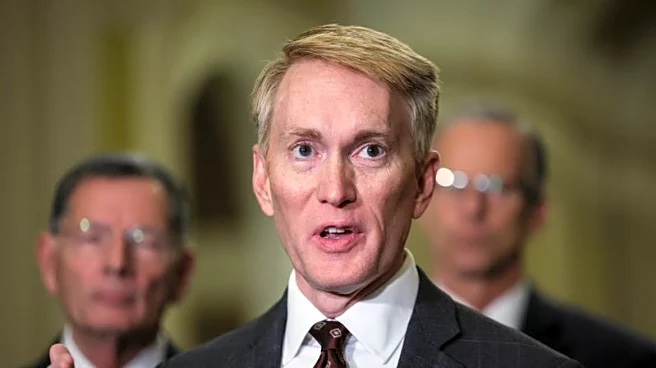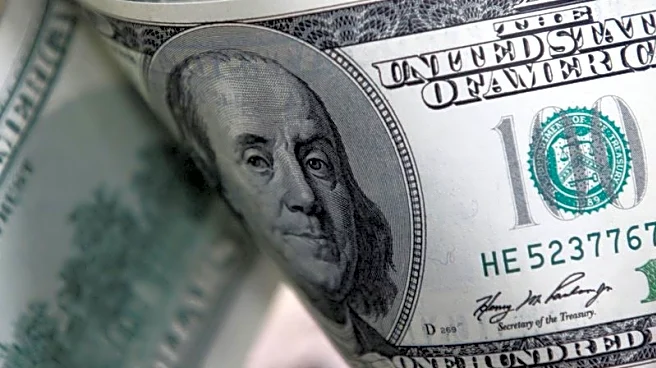What is the story about?
What's Happening?
The upcoming U.S. nonfarm payroll report for August 2025 is expected to be a critical event for global markets, with the Federal Reserve's policy decisions hanging in the balance. The labor market is showing signs of cooling, with projections indicating 75,000 job additions, which is below the earlier forecast of 110,000. This report is anticipated to reveal an unemployment rate of 4.2% and a declining labor force participation rate. The Federal Reserve is under pressure to balance inflation control with economic growth, as investors brace for potential rate cuts. The September meeting of the Federal Reserve is a focal point for speculation, with a 92% probability of a 25-basis-point cut priced into the CME FedWatch tool. Political pressures, particularly from the Trump administration, are adding complexity to the Fed's decision-making process.
Why It's Important?
The significance of the U.S. jobs report lies in its potential impact on the Federal Reserve's monetary policy and the broader economic landscape. A weaker-than-expected report could accelerate rate cuts, further weakening the dollar and boosting gold prices. The dollar has already fallen nearly 10% against major currencies in 2025, influenced by inflationary pressures from trade policies and geopolitical tensions. The bond market is also affected, with intermediate-term bonds gaining favor over long-term bonds due to persistent inflation expectations. The commodities market is caught between the Fed's rate cuts and inflationary pressures from trade policies, with tariffs raising $88 billion in revenue and driving up prices for goods.
What's Next?
The Federal Reserve's September meeting will be closely watched for signals of a policy pivot. A weaker-than-expected jobs report could lead to accelerated rate cuts, further weakening the dollar and boosting gold prices. Conversely, a stronger report might delay cuts, preserving the dollar's strength but risking inflationary pressures from trade policies. Investors must remain agile, hedging against both rate-cut scenarios and geopolitical shocks. The global markets will be attentive to the Fed's ability to navigate a fragile economic landscape and redefine the dollar's role, reshape bond yields, and ignite a commodities rally.
Beyond the Headlines
The deeper implications of the Federal Reserve's decisions include concerns about its independence and credibility, which could erode confidence in the dollar's reserve status. Political pressures from the Trump administration for aggressive rate cuts add complexity to the Fed's calculus. The bond market's yield curve divergence reflects the Fed's dilemma in balancing rate cuts with inflation control. The commodities market faces inflationary pressures from trade policies, with tariffs driving up prices for goods like appliances and electronics.
AI Generated Content
Do you find this article useful?















